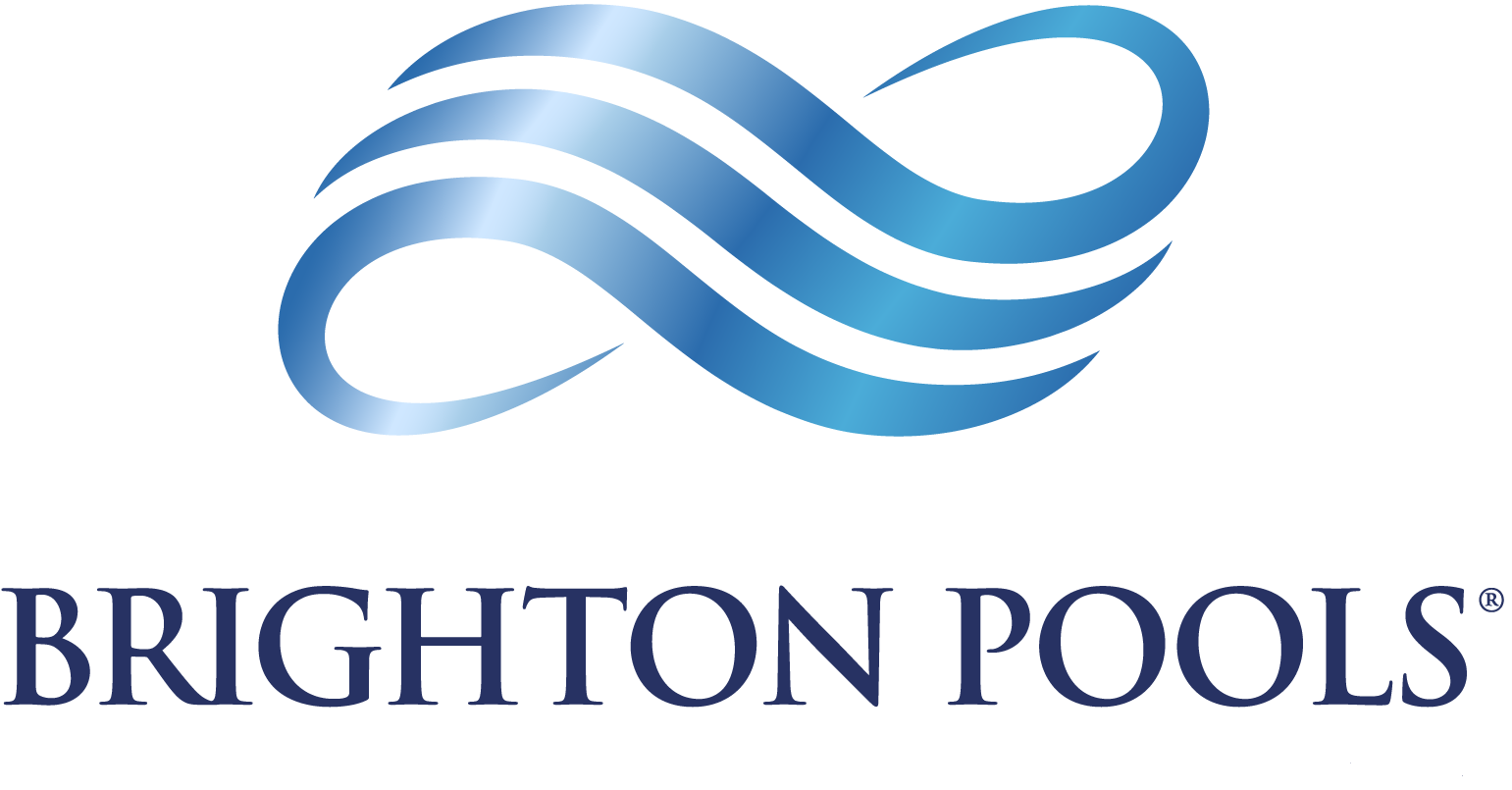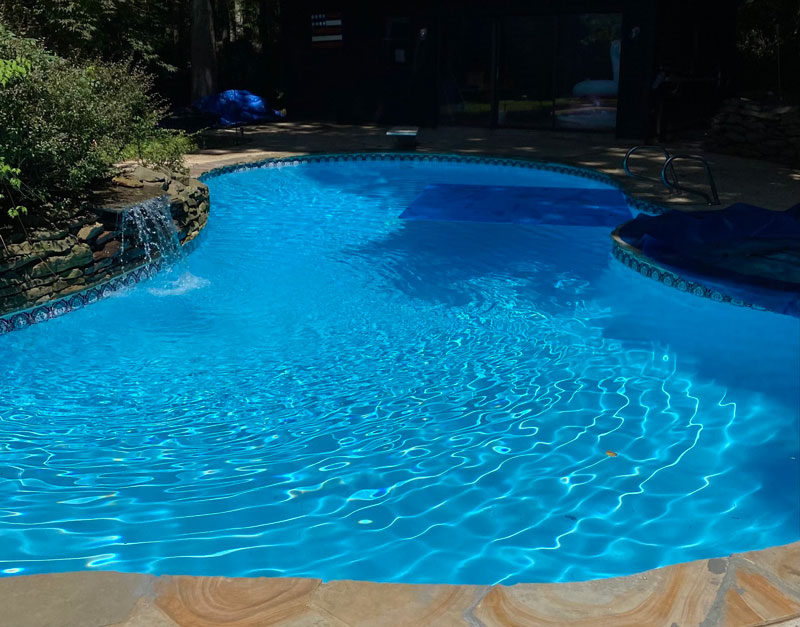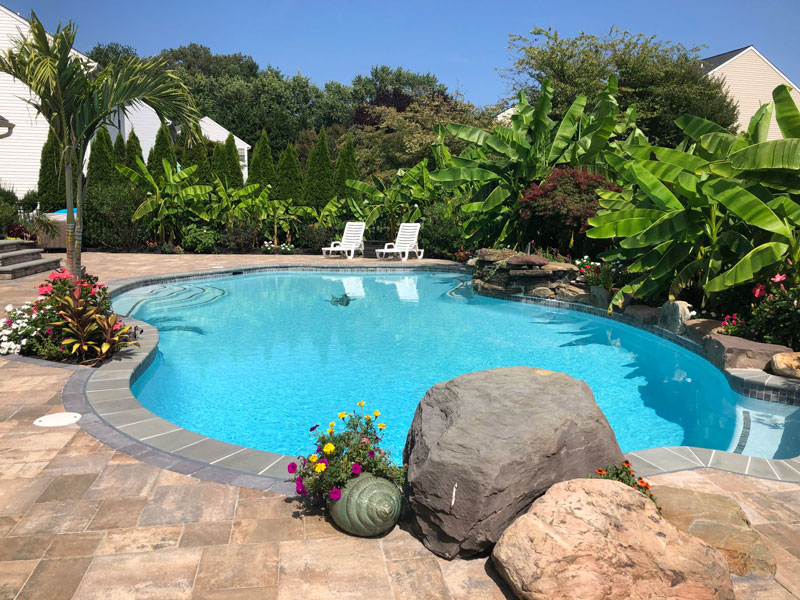Keep Water Chemistry In Balance
When caring for swimming pools and spas, water chemistry is a very important component along with testing, proper circulation, filtration and regular cleaning. Maintenance is key!
Below please find a chart below showing the proper levels of water balance required to assure your pool water is safe, easy to care for and right for keeping your pools finish and equipment in tip top shape. Please contact your closest Brighton Pools® location for any questions or additional information you may need.
Click Here for Brighton Pools Pool Water Gallonage Calculator.
Note: In the chart above, Marcite is white plaster also known as marbelite. Exposed Aggregate is Diamond Brite. Aqua Bright are the same guidelines as vinyl.
In addition, we suggest always using a sequestering agent such as stain and scale control and an algae inhibitor, both to be used as a maintenance dose on a regular basis. Stain and scale control will inhibit scale build-up causing roughness and the chances of staining will be greatly reduced or eliminated. Algaecides will help assure algae to not get a grip. Be sure the calcium hardness is kept in the proper range to assure a smooth comfortable finish for many years.
If your pool is equipped with a saltwater chlorine generator here is a helpful guide showing how to program the system, set-up schedules and includes trouble shooting scenarios. Hayward AquaRite S3 Technical Guide
Important: Do not allow swimmers or bathers in the pool until the water is balanced for swimming. Water considered safe for swimmers and bathers includes a pH between 7.4 and 7.6 and a free chlorine residual of at least 1.0 ppm.
Safety First: Always add a chemical to the water, never water to the chemical.
If your pool’s interior finish was just completed, please see our:
• Plaster Start Up, Care and Maintenance Instructions
• Vinyl Liner, Aqua Bright and PVC Membrane Start Up, Care and Maintenance Instructions.
It’s start up care information for all types of interiors will assure your pool’s finish will cure properly to enjoy easy maintenance and beauty for many years.
Listed below are a few great resources to help understand how to avoid accidents in and around the pool and spa:
- Water Quality and Health Council
- Centers For Disease Control
- Pool & Hot Tub Alliance
For pools equipped with a salt generator it’s important to keep the salinity level at least 2,700 ppm but not more than 3,400 ppm. This will allow the electrolysis to produce chlorine effectively. Here’s a dosage chart for salt water pools:
We offer a comprehensive water testing kit that will enable you to know the parameters required to balance the water perfectly. Pool chemicals are drastically less expensive when sold online. The Taylor TTK2005C test kit will perform the tests needed. We can deliver it next day. Please contact us to purchase for $199.
Click Here for Brighton Pools Pool Water Gallonage Calculator.
A simple method of measuring your particular properties water flow involves a 5-gallon bucket and a watch. Place the hose in the bucket, turn on the hose and start your watch. Measure how long it takes for the bucket to fill to the top. Then divide by the number of minutes it took to fill the bucket by 5 to determine your average flow rate in gallons per minute.
On average a 10,000 gallon pool will take between 12-15 hours.
Brighton’s sureTREAT pool water testing program will assure your water testing records are safely kept in one place! It’ll help organize your pool water care chemistry.
Create your pools sureTREAT profile on the handy app or the online link below. Use supplier code BRIGHTONPOOLS.







